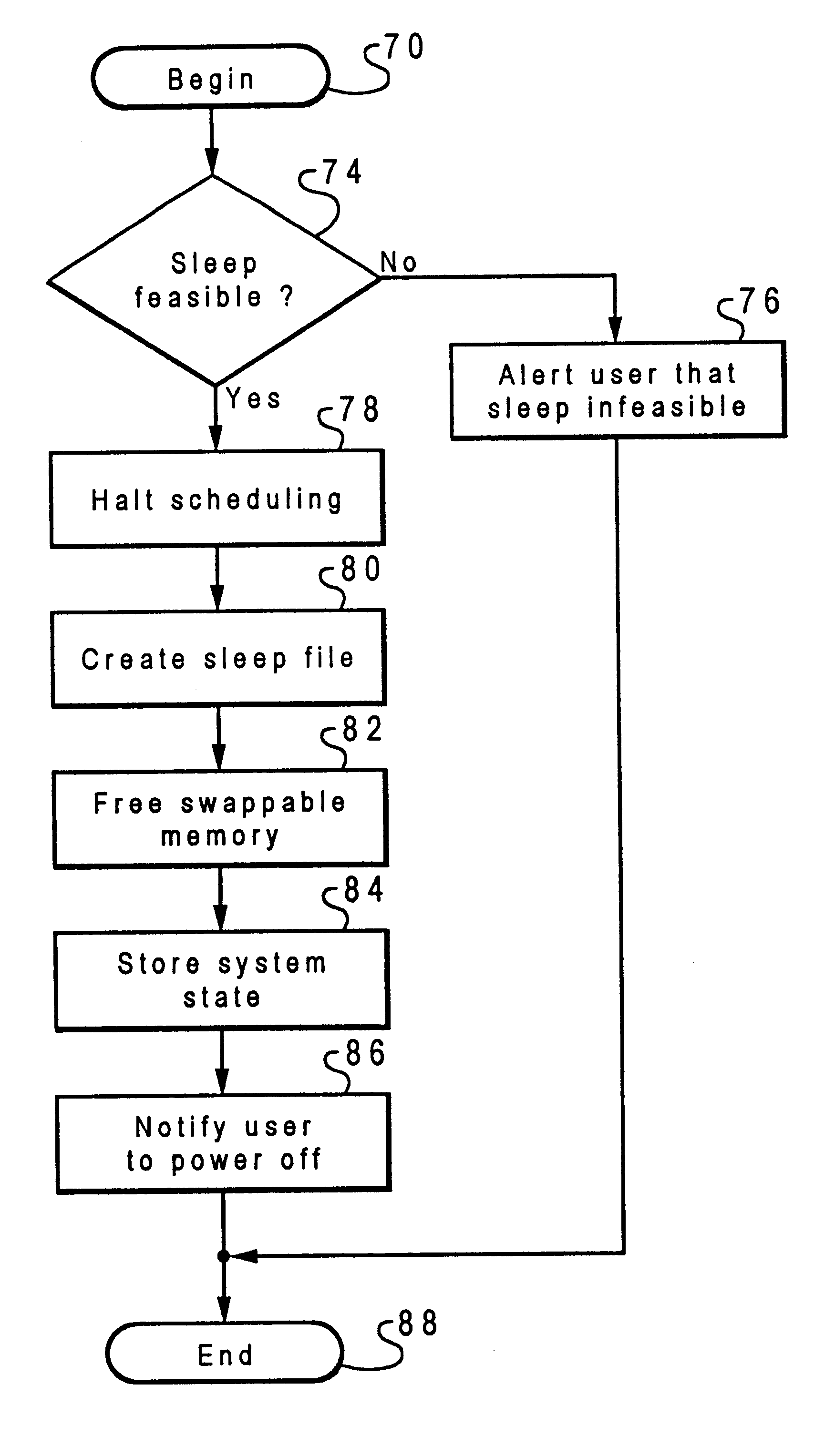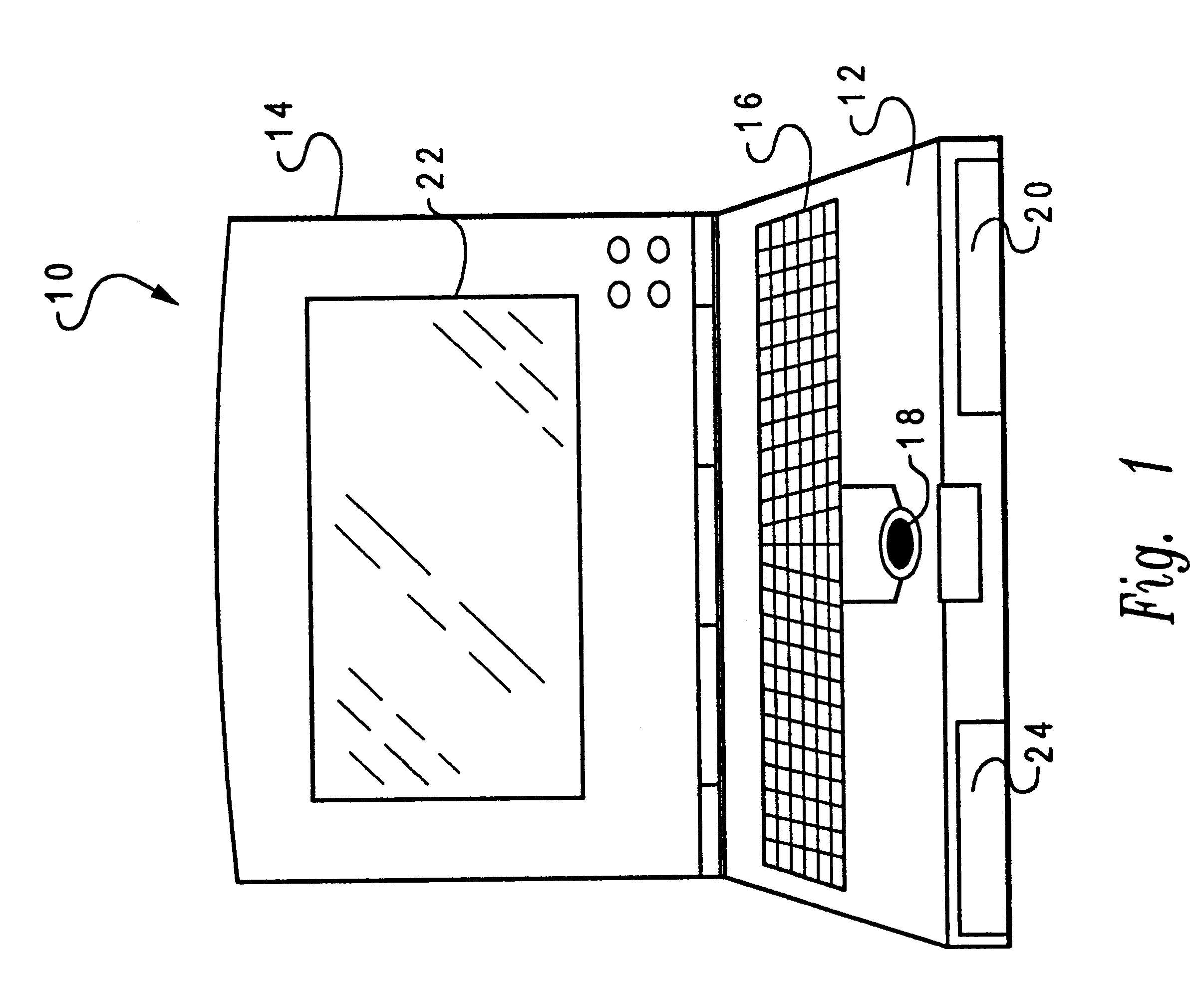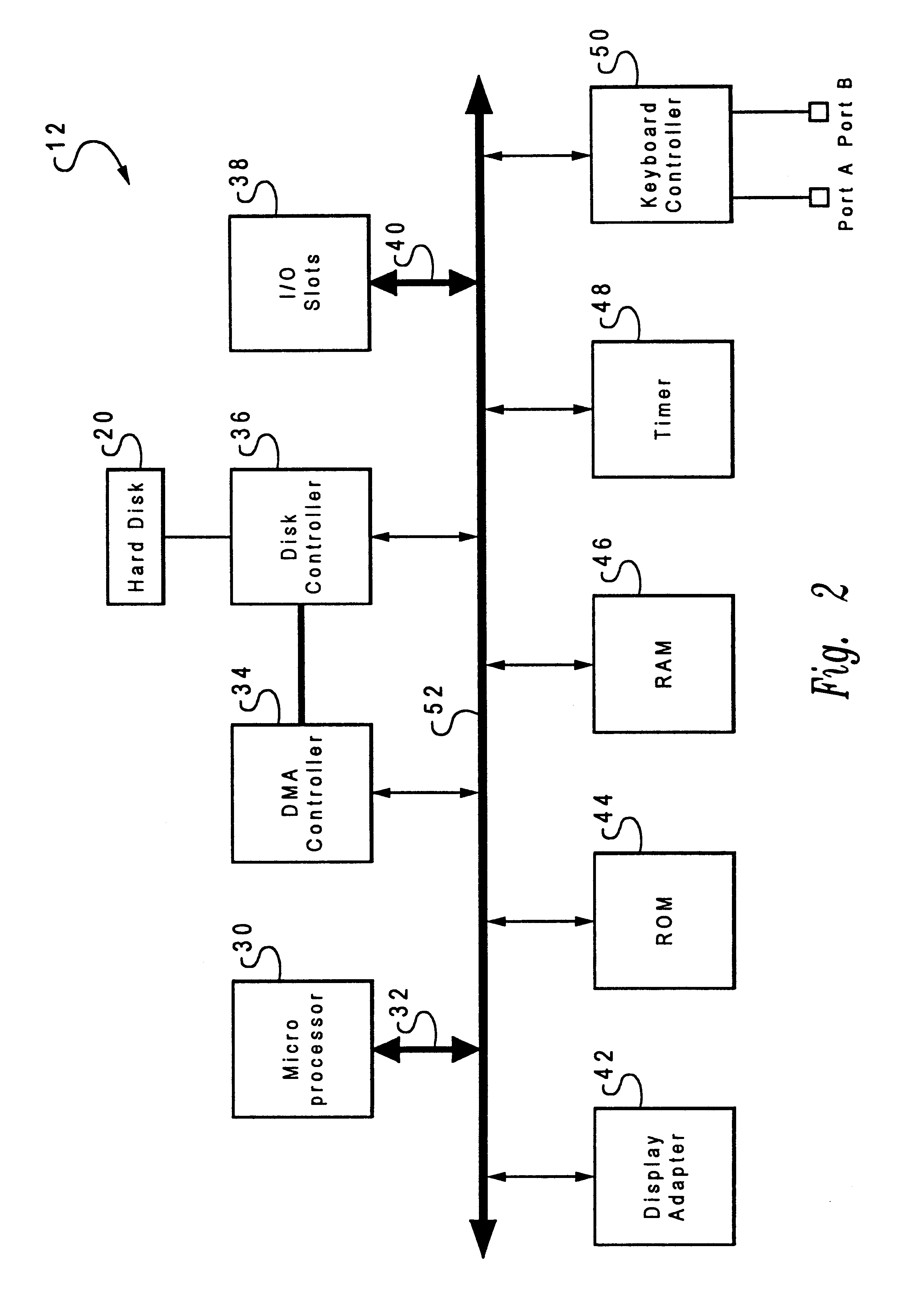Method and system for efficiently saving the operating state of a data processing system
a data processing system and operating state technology, applied in the field of methods and systems for improving data processing, can solve problems such as risking data loss, computer users relying on battery power, and computer users using battery power
- Summary
- Abstract
- Description
- Claims
- Application Information
AI Technical Summary
Benefits of technology
Problems solved by technology
Method used
Image
Examples
Embodiment Construction
With reference now to the figures, and in particular with reference to FIG. 1, there is illustrated a preferred embodiment of a data processing system utilizing the method and system of the present invention. As illustrated, data processing system 10, which in a preferred embodiment comprises one of the IBM ThinkPad portable computers, includes base 12 and cover 14 which is attached by a hinge along one edge to base 12 so that a user may open and close cover 14. As is well-known in the art, a user may input data to data processing system 10 utilizing keyboard 16, graphical pointing device 18, or other peripheral devices such as a floppy disk drive (not illustrated). Data processing system 10 outputs data to a user via display device 22, which is mounted inside cover 14. As is typical of portable computers, data processing system 10 can operate utilizing power supplied by rechargeable battery 24 or by a suitable DC transformer connected to a standard 120 V AC power supply.
Data proces...
PUM
 Login to View More
Login to View More Abstract
Description
Claims
Application Information
 Login to View More
Login to View More - R&D
- Intellectual Property
- Life Sciences
- Materials
- Tech Scout
- Unparalleled Data Quality
- Higher Quality Content
- 60% Fewer Hallucinations
Browse by: Latest US Patents, China's latest patents, Technical Efficacy Thesaurus, Application Domain, Technology Topic, Popular Technical Reports.
© 2025 PatSnap. All rights reserved.Legal|Privacy policy|Modern Slavery Act Transparency Statement|Sitemap|About US| Contact US: help@patsnap.com



